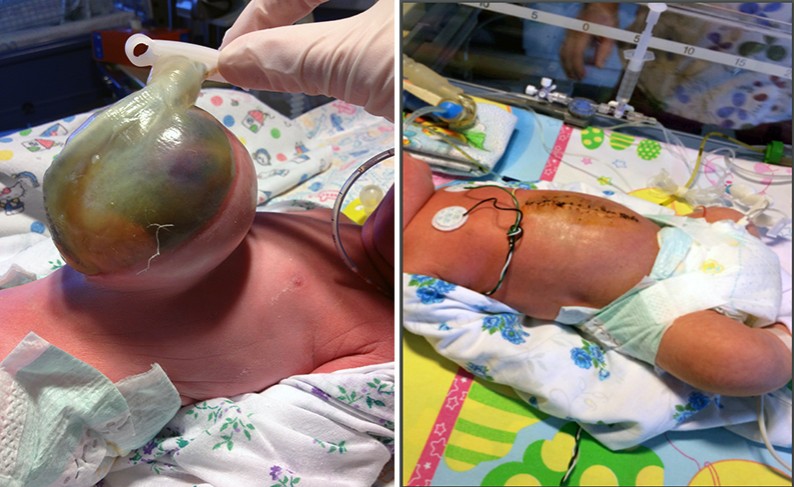
The Children’s Surgery National Applied Research Hospital has improved the technique of eliminating embryonic hernias (omphalocele) of large size, and has carried out 3 operations with its help.
In Belarus, averagely one or two children per year are born with an omphalocele. The fault develops in the intrauterine period: the anterior abdominal wall does not close, the intestine, part of the liver and other internal organs protrude from the abdominal cavity, the hernia sac is covered with embryonic membranes. The abdominal cavity of the newborn is very small. This is the whole difficulty of treatment: how to restore the correct anatomical structure of the cavity, if there is not enough space? If intra-abdominal pressure will greatly increase – the internal organs will be squashed.
“The idea for the treatment of newborns with omphalocele of large sizes was derived from a technique that is used in adult patients with a hernia of the anterior abdominal wall,” says Andrey Zapolyansky, one of the creators of the project. “At the first stage we set up a system of external traction of the muscles of the anterior abdominal wall (at special points), we excrete embryo-natal membranes and cover the organs with skin. Muscles of the newborn are flexible and supple, and within 6-7 days the abdominal cavity stretches. So an the second stage there is enough space to lower the organs at place and perform a layer-by-layer plastic of the defect. Both stages take 8-10 days. The cosmetic effect was unsatisfactory: rough scars were formed, they deformed the anterior abdominal wall. In this way, about 10 children were operated at the center (from 2000 to 2010). The advantages of the new method are that the congenital defect is treated during the neonatal period, the patient returns to a normal lifestyle within the shortest possible time.”
Taken from the site www.MedVestnik.by
